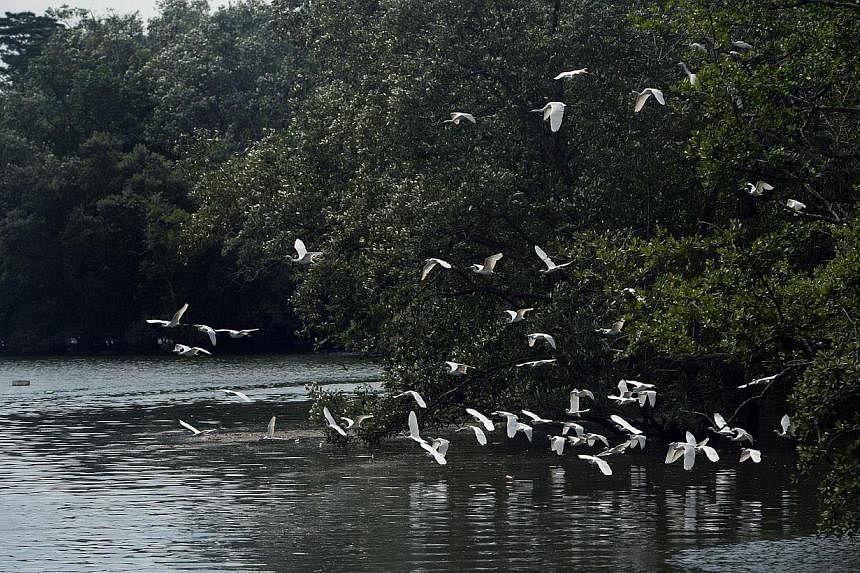SINGAPORE - Experts and environmentalists are gathering here this week to share ideas on how to conserve intertidal areas, or mudflats and mangroves in the region that teem with wildlife.
More than 60 government representatives, site managers and thought leaders from some 11 countries are attending the two-day symposium on Jun 12 and 13 to raise awareness and share strategies on the conservation of these areas which are are important to the eco-system.
The Sungei Buloh Wetland Reserve in Singapore, for instance, serves as a stop-over for migratory birds to feed and refuel. It is just one of 22 countries that span the East Asian-Australasian Flyway, an annual migration path for 50 million birds.
Spanning 10,000km, other countries that lie along the route include China, Korea, Australia and Russia. It is the flyway that is used by more species than any of the other eight global flyways, and is also home to the most threatened species of all of them. In January 2014, a Whimbrel, believed to be about 20 years old, was spotted at Sungei Buloh after about nineteen years.
Representatives from some of the countries along the East Asian-Australasian Flyway will be present at the international conference, called the Symposium on Intertidal Conservation in Southeast Asia, to discuss how countries in the region can work closely together as a network of migratory sites.
The symposium is co-hosted by BirdLife International, the National Parks Board, the National University of Singapore Law Faculty's Asia Pacific Centre for Environmental Law, and the Nature Society (Singapore).
Said deputy director of Sungei Buloh Wetland Reserve Sharon Chan: "Birds from Sungei Buloh Wetland Reserve, like the Mongolian Plover, have made stopovers in Thailand and Malaysia to feed during the migratory season.
"What happens at one site along the East Asian-Australasian Flyway affects the rest. Only through constant communication and sharing among countries along the flyway can protection of the migratory birds become effective."


